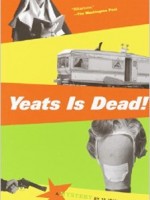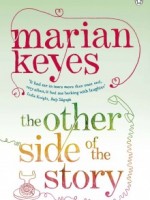(Published by Virago Press )
 |
This edition of Good Behaviour belongs to a newly reissued catalogue of Molly Keane’s work to coincide with the centenary of her birth. The introductions to three of them – Good Behaviour, Loving and Giving and Time After Time – are written by Marian Keyes, Michèle Roberts and Emma Donoghue respectively. If the quality of writer Keane has influenced is to be expected, such diversity in their styles is a surprise. But then Keane’s books examine so many themes, even if the settings are often similar. She may favour big houses populated by the Anglo-Irish ascendancy as her backdrop, but there are no end to the subjects Molly Keane holds up to the light for examination.
Good Behaviour is the first book I’ve read by Keane and it’s not an overstatement to say it’s a masterpiece. Her friend and contemporary Elizabeth Bowen dominated the pool of big house writing but Keane’s writing is warmer and more acutely observed. The book’s title refers to the etiquette and social rules of the upper classes in a time gone by. When the influence (and wealth) of once lauded families faded, many still clung to the social restraint instilled in them as children who were “seen and not heard”. Aroon St Charles is one such child, even though we meet her at the start of the book as a bitter, rejected old woman tending her just-departed mother. While Aroon is telephoning the doctor, she waits for the phone exchange to put her through and her thoughts give us a clue as to what lies in the pages ahead. “I had time to consider how the punctual observance of the usual importances is the only way to behave at such times as these. And I do know how to behave – believe me, I know. I have always known…”
Her behaviour towards Rose, a servant of her mother’s, replicates the way her own family have treated her over the years. After this first powerful chapter, Keane takes us through Aroon’s childhood where a lack of affection and closeness ends up stymieing her emotional development. The need to behave properly in certain situations is more important than personal happiness. Like most big house children, it is a childhood of hunting, fishing, horse-riding in a rigidly structured class system. Aroon’s main playmate is her brother Hubert and she adores Mrs Brock the governess. Mrs Brock end up being punished for her own ‘bad’ behaviour – encouraging Hubert to read poetry (which boys shouldn’t do) and having a soft spot for Mrs St Charles. Hubert is also punished for this unmasculine act but his friendship with Richard is what really worries his father. When Hubert picks up on his father’s suspicion – the reader has no doubt he and Richard are gay – he arranges for Richard to seduce Aroon, who is besotted with him.
Richard and Aroon’s awkward seduction is so vividly traced that it feels like we are sitting on the end of the bed listening to the exchange. In referring to her ample chest Richard says, without a trace of desire, “Shall I lay my head on one of them just to see what it’s like?” But before this one-sided passion can be consummated, he backs out saying, “I really must not touch you, we’d regret it always piglet, wouldn’t we?” For Aroon, this is the acme of her desire for love and passion for the rest of her life, she keeps re-affirming to herself that she has at least “had a man in my bed”. Behaving properly has once again cost her dearly.
Her beloved brother Hubert is killed in a car crash and after the funeral Aroon speaks of a family in grief, but it’s a tragic depiction of a chronically dysfunctional family. “We exchanged cool, warning looks – which of us could behave the best: which of us could be least embarrassing to the others…”
Aroon is also an unreliable narrator – although she tells us everything from her point of view, we don’t necessarily believe her. What we do believe though, is the extent of her mother’s cruelty and Keane’s portrait of a spiteful matriarch is brilliantly wrought. The characterisation throughout is outstanding. Keane’s characters are thoroughly believable, in all their good and bad behaviour. At the party Aroon attends, she is sick on her dress, partly when she realises she is an aging gooseberry invited to make up the numbers. It’s a pitiful scene and Keane tugs sharply at our heartstrings.
The book is not without humour – even if comes only in shades of acid or black. It brings to mind Nancy Mitford, but is less frivolous and there is a darkness at the heart of Molly Keane’s big houses.
Keane is not as high profile as Mitford or Bowen but her contribution to the canon of Irish literature can never be understated. If only great writing like this was being published in the amount that what passes for the bulk Irish women’s writing these days. Keane deserves a renaissance and Good Behaviour is the best place to start.
Written by Nancy Mitford
Love in a Cold Climate
The Pursuit of Love



